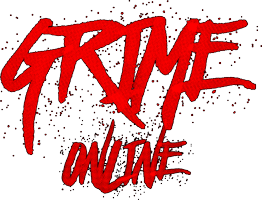At 10.15pm on Friday 28 June, Michael Omari will make pop music history. The 25-year-old South London MC, better known as Stormzy, will become the first grime artist to headline Glastonbury’s Pyramid Stage.
The elevation of grime from underground concern to festival-topping entertainment represents something of a crowning glory for the British genre, which is a brash and thrilling amalgam of hip hop, garage and dancehall. Stormzy’s performance will be beamed live to a TV audience of millions, his every utterance pored over and his set – for good or ill – talked about for years.
Grime aside, Stormzy will only be the third ever rapper to headline the Pyramid in the festival’s 49-year history, after Americans JAY-Z in 2008 and Kanye West in 2015.
Glastonbury has long championed urban music as part of its famously varied line-up: year after year its stages bulge with hip hop, rap and, lately, grime. In 2016 and 2017 you couldn’t walk for 10 metres without hearing grime’s scuzzy sub-bass wafting from a speaker stack.
Yet Glastonbury’s relationship with urban music remains complicated, as evidenced by the outpouring of disappointment and bemusement from some quarters when Stormzy was announced as a headliner last November. The same thing happened when JAY-Z and Kanye were unveiled. Why does Glastonbury’s association with urban music remain tricky? And will it always remain thus?
It’s true that Glastonbury has always been associated with folk, prog and guitar-based indie music, widely seen as white genres. But this lazy truism overlooks the festival’s long association with world music, roots and reggae. In 1982, Aswad, Black Uhuru and Osibisi were among the acts on the bill. In 1984, world music was given its permanent Marquee Stage, which later became the Jazz World Stage and is now the West Holts Stage.
In 1995 a dedicated Dance Tent opened: the tent (now a field) has showcased urban music ever since. Rap was represented on the Pyramid Stage in the 1990s by Spearhead and in the early 2000s by Cypress Hill, De La Soul and The Black Eyed Peas. And as far back as 2005 DJ Cameo, a grime DJ and producer, hosted an afternoon of grime MCs including Wiley, Trim and JME in Glastonbury’s Roots tent. But it was in 2008 when the festival took a quantum leap forward. And it was here where the trouble started.
JAY-Z was the biggest name in world hip hop at the time (he arguably still is), and booking him as the festival’s first urban music headliner was a leftfield masterstroke by the organisers. It made perfect sense because Glastonbury headliners were almost exclusively rock-orientated, white and – frankly – getting old, and the festival was in danger of being out of touch (headliners the year before JAY-Z’s appearance included The Who).
But what organisers couldn’t have anticipated was the backlash by fans and musicians alike, including Oasis’s Noel Gallagher. Gallagher famously said that Glastonbury was “built on a tradition of guitar music”. “If it ain’t broke, don’t fix it. If you start to break it then people aren’t going to go. I’m sorry, but Jay-Z? No chance,” the Mancunian said. “I’m not having hip hop at Glastonbury. It’s wrong.”
Worryingly for Michael and Emily Eavis, ticket sales seemed to reflect this opinion. Take up was slower than it had been for years, with the festival only selling out on its opening day. Emily Eavis appeared taken aback by the backlash against JAY-Z. It had what she described as “an interesting undercurrent” to it. “I’m not sure what to call it,” she said at the time, “at least not in public, but this is something that causes me some disquiet.” Whether it was snobbery or racism, the spat left a bitter taste for many people.
Talking to DJ Tim Westwood backstage before his show, JAY-Z seemed to be spurred on by the furore. “It feels like a moment in time. It’s my turn to show hip hop in a good light. I’m here to represent the culture,” the rapper said. And, boy, did he. Opening with a video loop of Gallagher’s comments, JAY-Z took to the stage with an acoustic guitar and played an ironic version of Oasis’s Wonderwall before bursting into 99 Problems. which he intercut with the guitar riff from AC/DC’s Back in Black. This year will be my 18th Glastonbury, and those minutes of music remains among the most electrifying 10 minutes of music I’ve seen down there. 2008 became his year.
Kanye West received equal opprobrium when he was announced for 2015. An online petition to stop his performance received over 135,000 signatures. Emily Eavis described the reaction as “horrible… just crazy”. She said that she received death threats. “It was not a pleasant world we unwrapped,” she said at the time. West’s performance was poorly received, although he wasn’t helped by comedian Lee Nelson crashing onto the stage during Black Jesus as a prank.
Somewhat inevitably, Stormzy had similar treatment last November, albeit slightly toned down. “Stormzy at Glastonbury is probably worse than Teresa [sic] May’s Brexit plans,” was the somewhat harsh judgment of one Twitter user. “OMG… Imagine how disappointed you’d be if this was the first time you were going,” said another. People’s objections were partially based on the fact that it was too soon: Stormzy has only released one album, 2017’s Gang Signs & Prayer.
I wrote at the time that Stormzy would be a phenomenal headliner, and I still believe he will be. After all, Coldplay only had one album out when they headlined in 2002 and that performance is now seen as a classic. Plus, Stormzy’s set on the Other Stage in 2017 was the highlight of the weekend. It was energetic, powerful and transporting: a landmark set. He galvanised the crowd, and the mutual flow of energy between performer and audience was a joy to behold. Glastonbury is all about trajectory, and based on this performance the Pyramid is a natural next stop. Yes, he’ll have to deliver the performance of his life this year. But I’d wager he does.
Stormzy has addressed the criticism. “I get it. Only one album, where’s all the number ones? But I think the argument doesn’t even deserve the fuel,” he said recently. “When 28 June comes, either everyone will be proved right or wrong, but I am the headliner and I will come and give you a headline performance.” He added that he has “mad underdog syndrome.”
The likely reason for this constant carping whenever an urban act is given a prime slot at Glastonbury is that the genre is an easy target for thousands of pasty white rock fans sitting behind their computers. Conservative in their tastes, they are quick to trash the unfamiliar. The man behind the Kanye petition, Neil Lonsdale, had reportedly never even been to Glastonbury. Perhaps grime and hip hop don’t feel authentically ‘Glastonbury’ to some people. What is the sound of the inner-city black experience doing being played to a field of middle-class, largely white people in rural Somerset, they ask? I have limited sympathy with this point of view, as the same could be said for all genres, from reggae to trance or from R&B to disco. None of these were invented in Shepton Mallet.
A recent report into grime by Ticketmaster found that 43 per cent of Britons listen to grime and 13 per cent attend grime gigs. Those numbers are huge. Why should Glastonbury not reflect this popularity in its line-up? It would be obtuse to ignore it.
People involved in grime are realists. They are aware that something gets lost when the music transfers from small city venue with a largely black audience to a huge field with a largely white crowd. Joseph JP Patterson, a journalist and grime expert, explains it thus in the Ticketmaster report: “The grime audience today doesn’t look like the ones I came up in – basically there’s a lot more middle-class white kids enjoying the music now. I’m used to going to grime raves and seeing dark rooms, hoods up, hood vibes. Today, though, it’s much more raver-friendly. It’s a gift and a curse though. A gift, because the new fans get to experience the movement without feeling intimidated. A curse, because some of that rawness is now definitely missing.”
A gift and a curse maybe. But Glastonbury’s middle-class-ness has another advantage for grime artists: it provides an impressive framework from which their music can be broadcast and showcased around the world. Many city centre grime gigs are closed down before they’ve even started due to so-called Form 696 episodes (the form is a risk assessment document that requires all personal data of promoters, MCs and DJs prior to the gig, and has resulted in many shows being banned). Glastonbury provides no such obstacles. The rawness may be missing but it is a huge platform that happens to have the BBC’s HD cameras on hand and an audience populated by grinning millennials in fairy wings.
So Glastonbury needs grime, and grime needs Glastonbury. But Stormzy’s imminent coronation notwithstanding, the festival must be careful. A note of caution was sounded in 2017 when Skepta’s Boy Better Know grime collective headlined the Other Stage on the Sunday. It was seen as a huge coup and the show was much anticipated. However it only drew a modest audience and received middling reviews. This was partly because Ed Sheeran attracted such a large crowd over on the Pyramid Stage. But it was also down to scheduling (I’d suggest that a set like that should have been on Friday or Saturday night) and perhaps even a touch of ‘grime overload’ (Kano had headlined The Park stage just minutes before they came on). More care could have been taken over the timings.
This aside, I hope that Glastonbury’s long association urban music continues for ever. At the end of the day, the carping doesn’t really matter. Why? Because there’s a schism between what the commentariat says on social media and the reality on the ground when it comes to grime or hip hop. Most urban music sets at Glastonbury – from Snoop Dogg in 2010 and Wu-Tang Clan in 2011 to Run the Jewels in 2017 – are in my experience always fantastic. The crowds who turned out to watch JAY-Z, Kanye and Stormzy were among the biggest I’ve seen there.
So will the complaints stop? Sadly I doubt it. Urban music isn’t going anywhere and UK and US rap in particular is going from strength to strength. So in all likelihood the quibbles from the dissatisfied social media mob will continue. There are suggestions, however, that we might be in for a temporary cessation of hostilities over the coming year. The rumoured headliners for 2020? Fleetwood Mac and Paul McCartney.
We rely on advertising to help fund our award-winning journalism.
We urge you to turn off your ad blocker for The Telegraph website so that you can continue to access our quality content in the future.
Thank you for your support.
Need help?
Visit our adblocking instructions page.


